Photographs

June 21. Khrushchev dons his old uniform and prepares his military for the possibility of war, during a speech in the Grand Kremlin Palace. (ITAR-TASS/Sovfoto)

July 8. Kennedy, aboard the Marlin, summons his top advisers to Hyannis Port to discuss the growing crisis. Left to right: JFK, military adviser Maxwell Taylor, Secretary of State Dean Rusk, and Secretary of Defense Robert McNamara. (AP Photo)
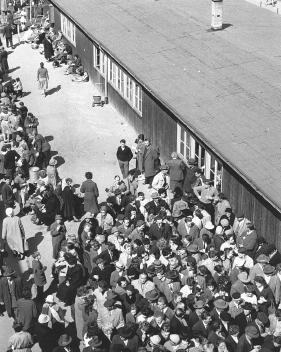
Meanwhile, every week the flood of East German refugees to West Berlin rises even higher, making the crisis greater. An overhead shot of the Marienfelde refugee center on the outskirts of Berlin. (USIS/National Archives)

A mother watches over her children while they wait for processing at Marienfelde. (USIS/National Archives)
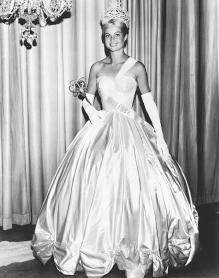
One refugee is Marlene Schmidt, who wins the Miss Universe pageant in Miami on July 15, less than a month before the border closes. (UPI/Library of Congress)

July 25. A pensive JFK before his first live TV speech to the nation from the Oval Office. (Cecil Stoughton/JFK Library)

Giving his secretary, Evelyn Lincoln, last-minute edits for the speech. (Robert Knudsen/JFK Library)
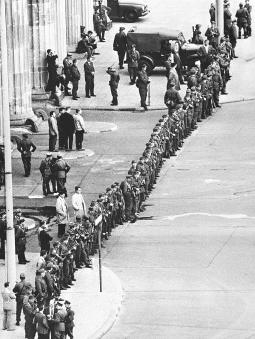
August 13. The border closes. East German infantrymen seal off the crossing point at the Brandenburg Gate. (USIS /National Archives)

An East German policeman breaks up a West Berlin demonstration with a high-pressure water hose. (USIS/National Archives)

Children in East Berlin look across the low barbed wire into West Berlin. (UPI/Library of Congress)

August 16. Mayor Willy Brandt rallies his city. A quarter million West Berliners hear him warn that the existence of the entire noncommunist world is at stake. (AP Photo, above, and USIS/National Archives, below)


August 18. After resisting the president’s request that he visit West Berlin, Vice President Johnson basks delightedly in the adoring crowd. (USIS/National Archives)

August 21. West Germany’s largest newspaper, Bild, heralds the arrival of symbolic troop reinforcements from the 18th Infantry, 1st Battle Group. (National Archives)

August 22. Adenauer finally appears in Berlin nine days after the border closes, to much criticism because of the delay. (AP Photo/Library of Congress)

Walter Ulbricht speaks to factory militia men to thank them for protecting his country against imperialist subterfuge. (AP Photo/Library of Congress)

The wall grows. East Berlin workmen pile up the blocks. (AP Photo/Library of Congress)
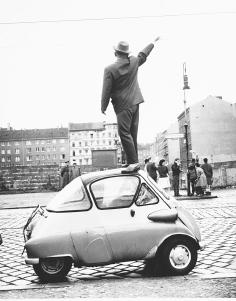
A West German stands on a car to wave over the wall. (UPI/Library of Congress)
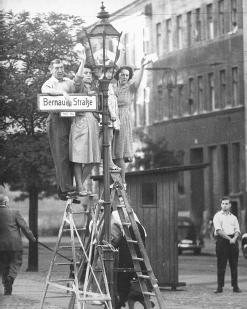
West Berliners stand on ladders and wave to loved ones on the other side. (USIS/National Archives)

Great escapes: East German border guard Conrad Schumann discards his rifle while leaping over barbed wire to freedom. (USIS/National Archives)

An elderly East Berlin woman is lowered from a window of her building, which rested in the communist zone, to freedom in West Berlin, with the help of neighbors and West Berlin firemen. (UPI/National Archives)

General Lucius Clay, hero of the 1948 Berlin Airlift. (AP Photo/Library of Congress)

September 19. An honor guard of U.S. soldiers and West Berlin police greets Clay, Kennedy’s special representative to Berlin, upon his arrival at Tempelhof Airport. (AP Photo/Werner Kreusch)

September 24. Kennedy warns the UN of the dangers of nuclear war facing the world, just as he is approving revised first-strike nuclear plans. (Cecil Stoughton/JFK Library)

October 18. Khrushchev shocks the world by announcing at the 22nd October Party Congress that he will explode the largest nuclear test bomb in history. (ITAR-TASS/Sovfoto)

October 25. The showdown begins. Three jeeps with armed U.S. military police escort an American automobile into East Berlin at the Friedrichstrasse checkpoint. (UPI/National Archives)

One of several American tanks is brought up to Checkpoint Charlie. (USIS/National Archives)

Soviet tanks from an American tank gunner’s viewpoint. (dpa/National Archives)

Spectators lining the Friedrichstrasse. (U.S. Army Signal Corps/National Archives)
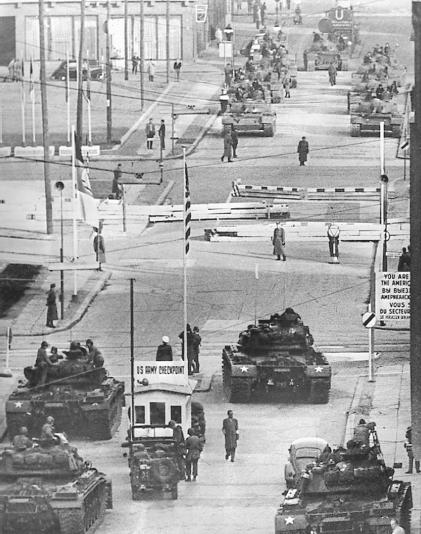
U.S. Army tanks, in the foreground, face off against Soviet tanks at Checkpoint Charlie. (AP Photo)

August 1962. A year after the border closing, eighteen-year-old Peter Fechter is shot in the back by communist border police and lies bleeding to death for more than an hour before his corpse is retrieved. The incident causes widespread protests in West Berlin. (UPI/National Archives)

June 26, 1963. Kennedy, Brandt, and Adenauer stand in an open car as they drive past half a million cheering Berliners, en route to the president’s historic speech. (U.S. Army Signal Corps/National Archives)

“Ich bin ein Berliner.” (Robert Knudsen/JFK Library)

Master and mentor: Joseph Stalin stands with Moscow Communist Party boss Nikita Khrushchev in 1936 at the Shchelkovo aerodrome. (Sovfoto)

Khrushchev with President Dwight Eisenhower, Nina Khrushchev, and Soviet Foreign Minister Andrei Gromyko in 1959. (ITAR-TASS/Sovfoto)

Khrushchev waves to a Los Angeles crowd during a 1959 trip to the U.S., the first state visit ever of the Soviet Union’s premier. (Frank Bauman/Library of Congress)

Ambassador to Great Britain Joseph Kennedy in 1938, flanked by sons Joe Jr. and John, in Southampton, England. (President’s Collection/JFK Library)
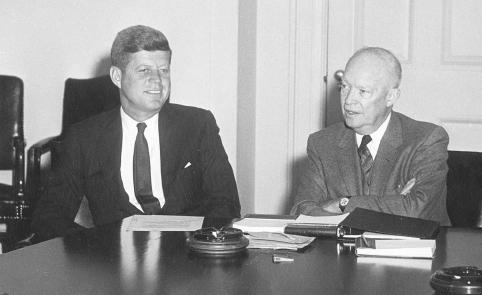
Changing of the guard: Eisenhower gives pointers to the man who will become America’s youngest president the next day. (Abbie Rowe/JFK Library)

Walter Ulbricht in exile: The future East German leader got to know Khrushchev while in Soviet exile during World War II. Here Ulbricht and fellow German communist Erich Weinert (left and right, respectively) try to persuade soldiers to defect. (Sovfoto)

Khrushchev and Ulbricht at the 5th Congress of the Socialist Unity Party, East Berlin, 1958. (Sovfoto)
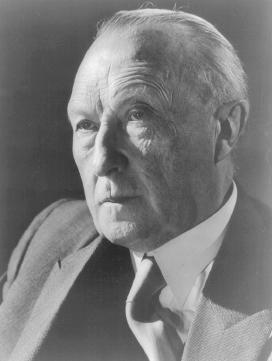
At the time of the Berlin crisis, Chancellor Konrad Adenauer, in his third term, was the first and still only elected leader of the Federal Republic of Germany. (Library of Congress)

“Der Alte” poses with orphans dressed as Snow White and two of her dwarfs as part of a two-day eighty-fifth birthday celebration in January 1961. (Bundesarchiv)

As an inaugural gift, Khrushchev released two captured U.S. airmen from Soviet prison. Here, JFK greets Captains Freeman B. Olmstead (second from left) and John McKone and their wives at a private reception. (AP Photo)

Kennedy with Dean Acheson, Truman’s secretary of state, whom he recruited for Berlin and NATO advice. (AP Photo/Tom Fitzsimmons)

A tale of two cities: East Berlin. Elderly women look out from apartment buildings pockmarked from World War II street battles. (USIS/National Archives)

A war-damaged store on Alexanderplatz stands in contrast to the propaganda sign in the background: “The stronger the German Democratic Republic, the more certain is peace in Germany.” (USIS/National Archives)

A tale of two cities: West Berlin. Nightlife on the Kurfürstendamm. (USIS/National Archives)

Fashionable West German women outside the Ku’damm’s most famous watering hole, the Café Kranzler. (USIS/National Archives)
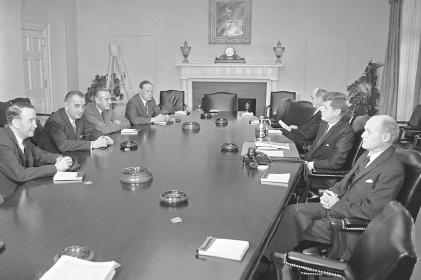
February 11, 1961. President Kennedy convenes the first meeting of his Kremlin experts for a brainstorming session. Clockwise from left: Ambassador to the Soviet Union Llewellyn “Tommy” Thompson, Vice President Johnson, Ambassador-at-Large W. Averell Harriman, State Department adviser Charles Bohlen, Secretary of State Dean Rusk, JFK, and Soviet expert George Kennan. (AP Photo/Harvey Georges)

Kennedy dispatched Ambassador Thompson to Moscow in late February with his first letter for Khrushchev—which the premier refused to receive for ten days. (Abbie Rowe/JFK Library)

March 13. Breaking with protocol, Kennedy meets with Berlin Mayor Willy Brandt, the West German opposition leader, before seeing Chancellor Adenauer. (Library of Congress)

April 5. Kennedy takes a stroll with British Prime Minister Harold Macmillan during a break in their talks in Washington, where the president would surprise his ally with the administration’s hard line on Berlin. (Robert Knudsen/JFK Library)

April 15. Adenauer and Kennedy praise each other at a press conference—though neither trusts the other. (Abbie Rowe/JFK Library)

April 16. Johnson throws a barbecue for Adenauer at his Texas ranch—and on the way to the airport, tells him about the Bay of Pigs operation then under way. (AP Photo)

April 22. Kennedy and Eisenhower meet at Camp David to discuss the aftermath of the Bay of Pigs disaster. (Robert Knudsen/JFK Library)

Khrushchev travels the Soviet Union on an “agricultural tour,” drumming up local support for the coming October Party Congress. (Novosti/Sovfoto)

A Soviet spy at Hyannis Port. In a rare photo, military intelligence agent Georgi Bolshakov (second from right) sits with JFK, an interpreter, and Khrushchev’s son-in-law Alexei Adzhubei (right). Before the Vienna Summit, Bolshakov began secret talks with Robert Kennedy as a conduit between the president and Khrushchev. (Cecil Stoughton/JFK Library)

June 1961, Washington. A reinjury of his back caused JFK much pain at the Vienna Summit. He was usually careful not to be photographed on crutches. (Abbie Rowe/JFK Library)

May 31. Children waving American flags welcome Kennedy to Paris. (USIA/JFK Library)

The First Couple, dressed for a formal dinner in their honor at the Élysée Palace. (USIA/JFK Library)

June 3, Vienna. Kennedy and Khrushchev shake hands on the first day of their historic talks. (USIA/JFK Library)

It began all smiles. (Sovfoto)

Khrushchev quickly came to dominate the discussion. (Cornell Capa/Library of Congress)

They broke for dinner at the Schönbrunn Palace, where Khrushchev was charmed by Jackie. (USIA/JFK Library)

But the mood of the talks remained tense. At the end, Kennedy left feeling battered and defeated by the premier. (USIA/JFK Library)
Загрузка...
 ТЕЛЕГРАМ
ТЕЛЕГРАМ Книжный Вестник
Книжный Вестник Поиск книг
Поиск книг Любовные романы
Любовные романы Саморазвитие
Саморазвитие Детективы
Детективы Фантастика
Фантастика Классика
Классика ВКОНТАКТЕ
ВКОНТАКТЕ